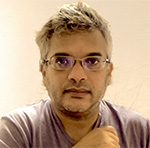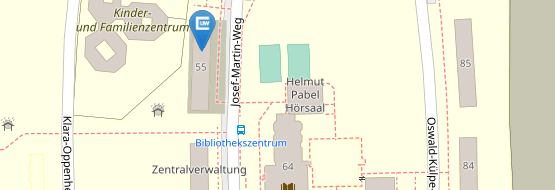Forschung
Functional Nanosystems – Materials Chemistry (FN-MC)
- Design, Synthese und Funktionalisierung von molekularen Nanostrukturen
- Anwendungen in Medizin, Elektronik, Energie und Umwelt
- Themen: Molekulare Chemie, Bionanotechnologie, Spektroskopie, Katalyse
Der FN-MC-Zweig konzentriert sich auf das Design, die Synthese und Funktionalisierung von Nanostrukturen für Anwendungen in Medizin, Elektronik, Energie und Umweltwissenschaften. Zentrale Fachkompetenzen umfassen die synthetische organische, bioorganische und Polymerchemie, Bionanotechnologie, Spektroskopie und computergestützte Chemie.
Die Grundlage bildet die komplementäre experimentelle und theoretische Expertise in organischer, supramolekularer, biomolekularer und computergestützter Chemie zwischen Wissenschaftlern der JMU und des IISER TVM. Die Forschung untersucht hybride Materialsysteme, die DNA, Farbstoffe, Block-Co-Polymere und Kohlenstoffnanostrukturen kombinieren, für multimodale optische Sensorik und selektive Analytennachweise.
Aufbauend auf der Expertise der IISER TVM-Gruppe in der Modellierung von Kohlenstoffnanostrukturen integriert das Projekt Quantenchemie und globale Optimierungstechniken, um Wechselwirkungen mit Atomen, Ionen und Molekülen für Sensorik, Trennung und Speicherung zu untersuchen. Geleitet vom computergestützten Design zielt die Studie darauf ab, die elektronischen Strukturen von Nanographenen und Nanobändern durch chemische Modifikationen mit Nukleinsäuren zu modulieren.
Gemeinsame Anstrengungen mit Experten für spektroskopische Analysen (Schwerpunkt FN-PH) werden die Entwicklung neuartiger funktionaler Nanostrukturen für Anwendungen in der Sensorik vorantreiben.
Luminescent Nanosystems studies in the Hariharan and Würthner labs comprise supramolecular complexes of p-conjugated molecules whose emission properties are governed by non-covalent interactions.
The internship projects in the Würthner laboratory at the Institute of Organic Chemistry in Würzburg are devoted to the synthesis of supramolecular complexes formed by nanographene scaffolds with suitable dyes or organometallic sensitizers. The internship projects in the Hariharan laboratory at IISER Thiruvananthapuram elucidate the photophysical properties of the supramolecular complexes by time-resolved optical spectroscopy. For the most promising materials systems, organic light emitting diodes will be fabricated in the Würthner laboratory at the Center for Nanosystems Chemistry in Würzburg.
In the Würthner group students will learn to synthesize larger nanographenes, the characterization techniques for supramolecular complexation and steady-state optical spectroscopies (UV/Vis absorption, fluorescence). In the Hariharan group students will learn how to carry out femtosecond transient absorption spectroscopy and how to evaluate the acquired data by software packages such as Glotaran.
References
F. Würthner, M. Hariharan: Control of photoluminescence properties by tailored supramolecular matrices, Trends in Chemistry 2025, 7, 208-224. https://doi.org/10.1016/j.trechm.2025.03.001
J. Rühe, K. Vinod, H. Hoh, Hanna, K. Shoyama, M. Hariharan, F. Würthner: Guest-Mediated Modulation of Photophysical Pathways in a Coronene Bisimide Cyclophane, J. Am. Chem. Soc. 2024, 146, 28222–28232. https://pubs.acs.org/doi/10.1021/jacs.4c08479
Prof. Dr. Mahesh Hariharan
Rerearch area:
Photochemistry and Physical Chemistry, time-resolved optical spectroscopy
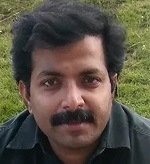
Prof. Dr. Frank Würthner
Research area:
Organic Chemistry, supramolecular functional materials

Functional Biomolecular Nanosystems studied in the Höbartner and Vijayan labs comprise DNA, RNA, and proteins that are the fundamental building blocks for life, and that are synthetically modified and repurposed for functions beyond those found in Nature.
The internship projects are part of ongoing research in engineering fluorescent nucleic acids and mimics of fluorescent proteins. The program includes studies of fluorogenic light-up aptamers that activate conditional fluorophores. Aptamers are made of defined DNA/RNA sequences that fold into 3D structures to form a specific binding site for a small molecule ligand. Other functional nucleic acids of interest in the Höbartner group include RNA-modifying ribozymes. Ribozymes are enzymes made of RNA that are generated in the laboratory to catalyze reactions for which there is no known RNA catalyst in Nature. Aptamers and Ribozymes are emerging functional nanosystems , for example for engineering metabolite sensors with potential future applications in medical diagnostics.
In the Vijayan group students will learn biomolecular NMR spectroscopy and investigate the structure and dynamics of various functional nanosystems made of DNA, RNA or proteins and their interactions with small molecules.
In the Höbartner groups the students will contribute to the biochemical and spectroscopic characterization of fluorescent aptamers and RNA-modifying ribozymes. The planned investigations will focus on the activity of aptamers or ribozymes for activating and installing new fluorophores, on structural requirements of the ligands with the possibility to expand to carbon nanostructures, as well as on metal ion dependence. The students will learn modern preparative and spectroscopic methods in the field of organic and biomolecular chemistry.
Prof. Dr. Claudia Höbartner
Research area:
Organic Chemistry, RNA aptamers & fluorescent DNA
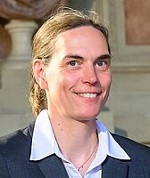
Prof. Dr. Vinesh Vijayan
Research area:
Physical Chemistry, NMR of peptide/protein/nucleic acid frameworks
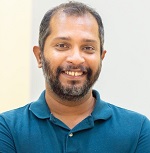
Nanosystems comprised of synthetic block copolymer micelles, nanogels and polyplexes, embedding immunomodulatory drugs or therapeutic RNA and DNA, offer unique features which are ideal to use them in drug delivery applications. They include excellent biocompatibility, stability under physiological conditions, and allow the integration of cell targeting moieties.
The internship projects are part of ongoing research in the design of such type of nanocarriers and their evaluation under applicable in vitro conditions. Such work includes advanced organic monomer syntheses, well-controlled polymerization strategies, nanoparticle formulation concepts and drug loading methods, followed by quantitative physicochemical characterization under in vitro conditions.
In the Nuhn group, the students can contribute to the ongoing research efforts in monomer/polymer/nanoparticle design. The students will have a chance to learn modern preparative methods and analytical tools in the field of organic polymer and biomolecular chemistry.
In Varghese’s group, the student will explore the potential of the nanoparticle as a drug carrier for the delivery of various anti-cancer agents. The student will be able to probe the potential of the nanocarrier both in vitro and in vivo mouse model. Drug delivery will be probed by using the standards assays and also will be analysed using confocal microscopic and other techniques.
References
Prof. Dr. Lutz Nuhn
Fakultät für Chemie und Pharmazie
Theodor-Boveri-Weg C10
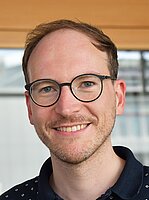
Dr. Reji Varghese
Research area:
Bioorganic Chemistry, DNA based supramolecular structures
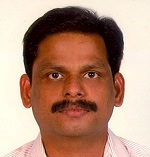
Functional nanosystems based on extended carbon frameworks exhibit tunable excited-state properties that are highly relevant for photonic and optoelectronic applications. The Swathi and Röhr groups combine complementary theoretical approaches to investigate how structural motifs and chemical functionalization modulate the photophysical behavior of these nanomaterials.
In the Swathi lab, students will apply particle swarm optimization and physically motivated model potential techniques to predict stable geometries and interaction patterns of aggregates of carbon-based molecular systems. These predicted structures form the basis for excited-state quantum chemical simulations in the Röhr group, where students will use configuration interaction methods as well as semiempirical electronic structure models techniques to analyze electronic excitation spectra, state ordering, and the spatial character of excited states.
The aim is to uncover how size, edge topology, and substitution influence singlet–triplet gaps, transition densities, and spin-orbit coupling effects in carbon nanostructures. Students will learn how supramolecular geometry, local electronic structure, and symmetry interact to shape the excited-state landscape. The project provides training in structural modeling, excited-state electronic structure theory, and the interpretation of quantum chemical data for extended molecular systems.
References
Dr. Merle Insa Silja Röhr
Research area:
Theoretical Chemistry, QM of multiexciton states, metadynamics for functional landscapes
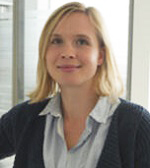
Prof. Dr. R. S. Swathi
Research area:
Theoretical Chemistry and Quantum Chemistry, computational material science
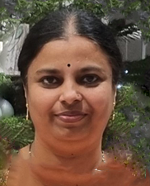
Functional Nanosystems – Photonics (FN-PH)
- Licht-Materie-Wechselwirkungen und photonische Quantentechnologien
- Entwicklung elektrisch abstimmbarer plasmonischer Nanoantennen
- Anwendungen: Nanophotonik, Optoelektronik, Quantenoptik
Der FN-PH-Zweig konzentriert sich auf die Erforschung schwacher bis stark gekoppelter Licht-Materie-Wechselwirkungen, bei denen maßgeschneiderte Nanosysteme die Energiegewinnung für die solare Umwandlung, energieeffiziente Optoelektronik und fortschrittliche photonische Geräte verbessern. Ein zentrales Forschungsfeld ist die Entwicklung abstimmbarer plasmonischer Nanoantennen für Anwendungen in der Nanophotonik, Optoelektronik und Quantenoptik.
Durch die Untersuchung nanoskaliger Wechselwirkungen zielt das Projekt darauf ab, eine präzise räumliche und spektrale Kontrolle über Absorption, Emission und Streuung zu erreichen – mit Vorteilen für leistungsstarke Photovoltaiksysteme, Photodetektoren und Quellen für Quantenphotonen. Die Entwicklung von Kernkompetenzen umfasst das Design und die Herstellung nanostrukturierter Oberflächen, Metamaterialien, Metasurfaces und hybrider Nanokomposite, ergänzt durch spektroskopische Analysen und computergestützte Modellierung.
Plasmonische Nanoantennen stehen im Zentrum der Nanophotonik, da sie eine verstärkte Lichtemission und -absorption für optoelektronische Anwendungen ermöglichen. Diese Forschung wird elektrisch adressierbare plasmonische Architekturen entwickeln, die Licht-Materie-Wechselwirkungen gezielt steuern und so die Emissionseffizienz in Nano-LEDs der nächsten Generation und Quantenlichtquellen verbessern.
Durch die Integration aktiver Abstimmmechanismen wie elektrooptische Modulation oder spannungsgesteuerte Steuerung wird eine Echtzeitkontrolle über lokalisierte Plasmonen erreicht. Diese Nanoantennen werden auch die Empfindlichkeit der Infrarot-Photodetektion erhöhen, was Biosensoren und optischen Kommunikationssystemen zugutekommt.
Zur Leistungsoptimierung werden fortschrittliche Nanofertigungstechniken, numerische Simulationen und experimentelle Charakterisierungen eingesetzt. Die Ergebnisse werden die Entwicklung miniaturisierter, energieeffizienter optoelektronischer Geräte mit anpassbaren Funktionen vorantreiben und den Weg für adaptive Displays, dynamische Bildgebungssysteme und Anwendungen in der Quantenphotonik ebnen.
Wir entwickeln und wenden Methoden der Femtosekundenlaserspektroskopie an, um ultraschnelle Dynamiken in molekularen und kondensierten Materiesystemen zu untersuchen – darunter Nanoplasmonik, 2D-Materialien und hybride Nanostrukturen. Besonders interessiert uns die Isolierung von Mehrteilchendynamiken in komplexen Quantensystemen durch die Trennung verschiedener nichtlinearer Ordnungen [1]. Im Rahmen eines ERC Advanced Grants [2] erweitern wir unsere neue Technik auf andere spektroskopische Beobachtungsgrößen sowie auf zeitaufgelöste Mikroskopie. Dies ermöglicht es uns unter anderem, Energieübertragungen räumlich und zeitlich zu verfolgen und die Wechselwirkungen zwischen verschiedenen Anregungen zu untersuchen.
[2] ERC Advanced Grant: 2.5 Million Euros for Tobias Brixner
Prof. Dr. Tobias Brixner
Research area:
Physical Chemistry, ultrafast two-dimensional electronic spectroscopy

Prof. Rajeev N. Kini
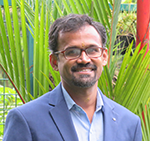
The structure and dynamics of excited molecular states play a crucial role in diverse environments, including the interstellar medium (ISM), planetary atmospheres, and man-made plasmas. Gaining quantum-level insights into the ultrafast evolution of these states is essential. Time-resolved gas-phase electronic spectroscopy and photofragment dynamics studies are at the forefront of exploring such processes beyond the Born–Oppenheimer approximation, on femtosecond timescales.
Gope’s lab employs advanced experimental tools such as Velocity Map Imaging (VMI), Coulomb Explosion Imaging (CEI), and a COLTRIMS-based setup integrated with supersonic molecular beams, complemented by pump–probe spectroscopy. By combining multiparticle probes, including electron beams and ultrafast lasers, the group investigates ultrafast molecular dynamics with high precision. A distinctive strength of their approach lies in the ability to reconstruct the full 3D momentum distributions of ions and electrons in coincidence, a step toward mapping the potential energy surfaces of excited molecular states. In particular, the lab utilizes attosecond extreme-ultraviolet pulses, generated via high-order harmonic generation (HHG), to both initiate and track molecular motion on ultrafast timescales, often involving complex and non-trivial dynamics [1,2].
[1] Gope, K., Livshits, E., Bittner, D. M., Baer, R., & Strasser, D. (2021). Two pathways and an isotope effect in H3+ formation following double ionization of methanol. Natural Sciences, 1(2), e10022.
[2] Gope, K., Livshits, E., Bittner, D. M., Baer, R., & Strasser, D. (2022). An “inverse” harpoon mechanism. Science Advances, 8(39), eabq8084.
Prof. Dr. Ingo Fischer
Research area:
Physical Chemistry, gase phase spectroscopy

Dr Krishnendu Gope
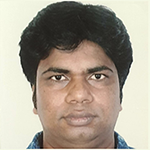
Prof. Dr. Bert Hecht
Group leader Nano-Optics and Bio-Photonics
Experimental Physics 5
University of Würzburg
Am Hubland
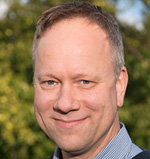
Prof. Dr. Joy Mitra
IISER - Thiruvananthapuram
Maruthamala PO, Vithura
